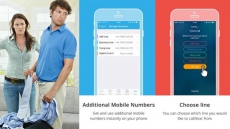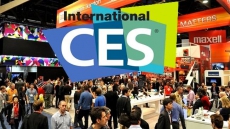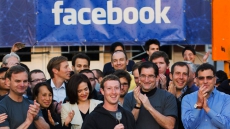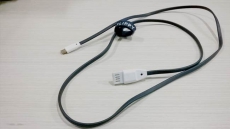LAS VEGAS — For years, TV makers have focused on making pictures sharper by squeezing more pixels onto screens. Now, their attention is shifting to improving the way sets display colour, with a newish technology called HDR taking centre stage.
HDR, or high dynamic range, promises brighter whites, darker blacks, and a richer range of colours — at least when you're watching the few select movie titles that get released in the format. Trouble is, there aren't all that many of those yet, and other HDR viewing options are likely to remain scarce for the immediate future.
Even worse, there are likely to be several different flavours of HDR, just to keep TV buyers on their toes.
HDR represents the latest effort by the world's television makers to goose demand for new sets. Global television shipments are expected to flatline this year, says research firm IHS — and that's an improvement over 2015, when shipments fell 4 per cent.
TV makers are still touting the previous new new thing — 4K, or ultra high-definition, sets, which have four times the pixels of current high-definition screens. While 4K has stopped the bleeding, it hasn't jolted the TV industry back to life, not least because such high resolution only makes sense if you sit up close and get a very large screen. (See our interactive guide to figuring whether 4K makes sense for you: http://bit.ly/1NnD49i .)
HDR faces some similar challenges. As with 4K, studios have to release movies and shows in the new format for owners to get the most out of new HDR sets. To date, there have been only a handful of releases, including "The Martian" and Amazon's original series "Mozart in the Jungle." More are coming, and Netflix aims to join Amazon this year in streaming some HDR titles, but getting an HDR-ready set still mostly means preparing for the future.

It's the same chicken-and-the-egg problem that previously confronted would-be buyers of Blu-ray discs, high-definition TV, 3-D TV and most recently, 4K.
Beyond that, there's the complicated issue of choosing between different versions of HDR. For starters, your version of HDR may look better or worse depending on the kind of set you get.
Basically, only two types of TV screens can display HDR: those using organic light emitting diodes (OLEDs), now built only by LG; and liquid crystal display (LCD) panels that use quantum dots, which are being made by everyone else.
OLEDs are more expensive but provide higher contrast, with truer blacks made possible by pixels that turn all the way off. LCDs, by contrast, will give you a brighter image than OLEDs, but require a backlight that limits just how black its screen can get. (A similar argument over "true" blacks and higher contrast ratios once raged between proponents of plasma-screen and LCD-screen TVs; LCDs won that round.)
Then comes the next wrinkle: a new proliferation of HDR-related marketing labels. For instance, there are actually two ways of defining "premium" HDR technology — one for OLED sets and one for LCDs. The LCD standard allows a brighter screen with less contrast, but the Ultra HD Alliance of electronics manufacturers, studios and distributors says both deserve the tag "Ultra HD Premium."
At least those sets will offer better pictures when you watch HDR-compatible programming. But many lower-end sets will also play HDR-formatted shows, just without the technology's trademark wider colour and brightness range — and they'll still be able to boast of "HDR compatibility" even if it's largely meaningless.
Confused yet? You probably won't be alone. "People can understand that more pixels is better than fewer," says IHS's TV analyst Paul Gagnon. "When you start talking about colour gamut and HDR, people's eyes start to glaze over.

Set manufacturers aren't making it any easier on us. LG, for instance, has three levels of HDR: "HDR Pro" for its top-of-the-line OLED sets, "HDR Plus" for high-end 4K TVs with contrast-limited LCD screens, and then a lower level simply called "HDR" that still promises better colour display than vanilla high-def sets — for instance, by displaying less "banding" on a sky with complex shades of blue.
LG's director of new product development for home entertainment, Tim Alessi, acknowledges the challenge: "We definitely need to do a good job on educating the consumer on what HDR is all about."




